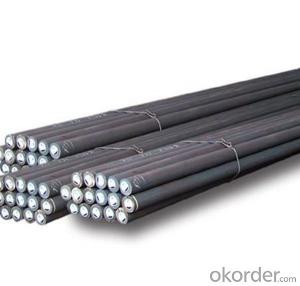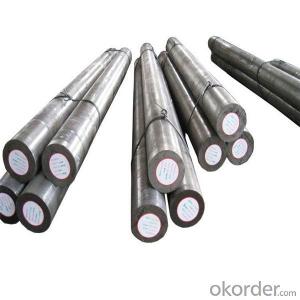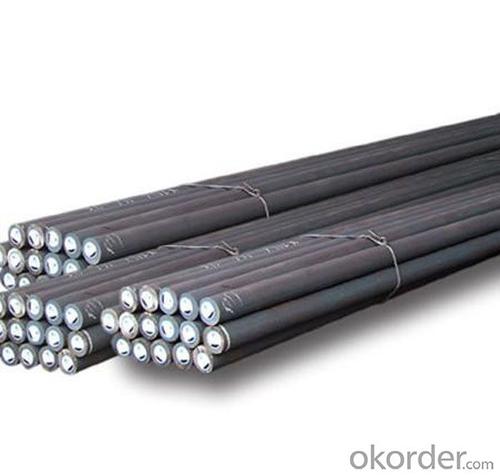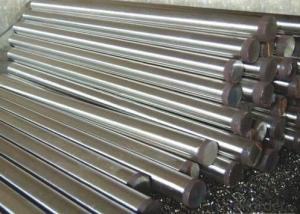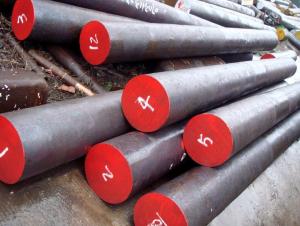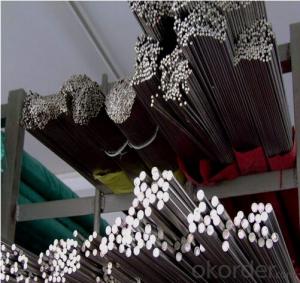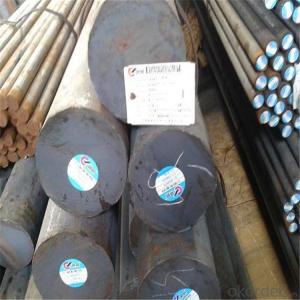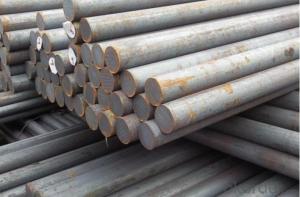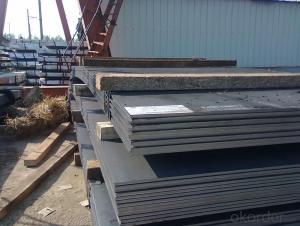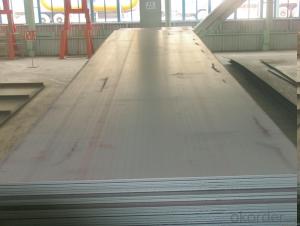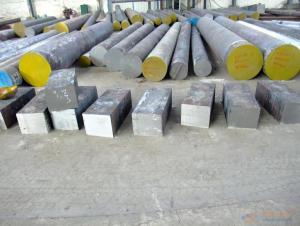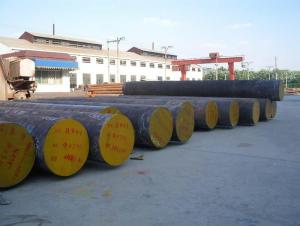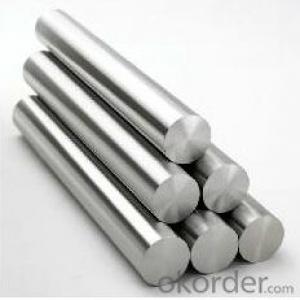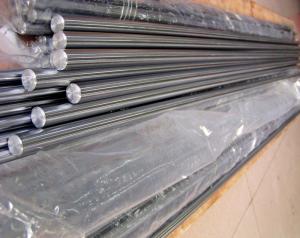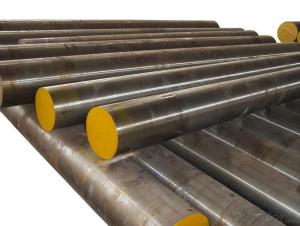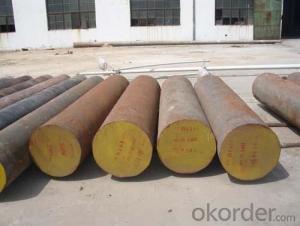Special Steel GCr15 Cold Work Die Steel Steel Bar
- Loading Port:
- China main port
- Payment Terms:
- TT or LC
- Min Order Qty:
- 25 m.t.
- Supply Capability:
- 10000 m.t./month
OKorder Service Pledge
OKorder Financial Service
You Might Also Like
Specification
Special Steel GCr15 Cold Work Die Steel Steel Bar
Product Description:
1. Production Standards: GB, AISI, ASTM, SAE, EN, BS, DIN, JIS
2. Smelt Iron -EAF smelt Billet - ESR smelt Billet -Hot rolled or forged steel round bar and plate
3. Heat treatment: Normalized / Annealed / Quenched+Tempered
4. Quality assurance: All orders received; Third party inspections including SGS, BV, and others test company test and inspect our products before shipping
Product Specifications:
Chemical Composition(GB)%
C | Si | Mn | Cr | Cu | S |
0.95-1.05 | 0.15-0.35 | 0.25-0.45 | 1.4-1.65 | ≤0.20 | ≤0.020 |
Heat Treatment
Item | Temperature ℃ | Hardness |
Anneal | 790-810 | 170-207HB |
Quenching | 830-860 | 62-66HRC |
Tempering | 150-180 | 61-66HRC |
Product Applications:
Used to make the load of the larger small cross-section conditioning and stress smaller large parts
Product Details:
Plastic Mould Steel
DIN 1.2311,1.2738,1.2083,1.2316 etc.
AISI P20,P20+Ni,420 etc.
JIS SUS420J2
Hot Work Steel
DIN 1.2344,1.2343,1.2367,1.2365,1.2581,1.2713 etc.
AISI H13,H11,H10,H21, etc.
JIS SKD61,SKD6,SKD5,SKT4 etc.
Cold Work Steel
DIN 1.2739, 1.2601, 1.2080, 1.2436, 1.2631, 1.263, 1.2510, 1.2327 etc.
AISI D2, D5, D3, D6, A8, A2, O1 etc.
JIS SKD10, SKD11, SKD1, SKS3 etc.
High Speed Steel
DIN 1.3343, 1.3243, 1.3247, 1.3355 etc.
AISI M2, M35, M42, T1 etc.
JIS SKH51, SKH35, SKH59, SKH2 etc.
Alloy Structural Steel
DIN 1.7035,1.6511,1.7220,1.7225 etc.
AISI 5140, 4340, 4135, 4140 etc.
JIS SCr440,SNCM439,SCM435,SCM440 etc.
Stainless & Carbon Steel or Others
DIN 1.4125,1.1191 etc
AISI 440C,1045, 1020 etc.
JIS SUS440C,S45C etc
Product show
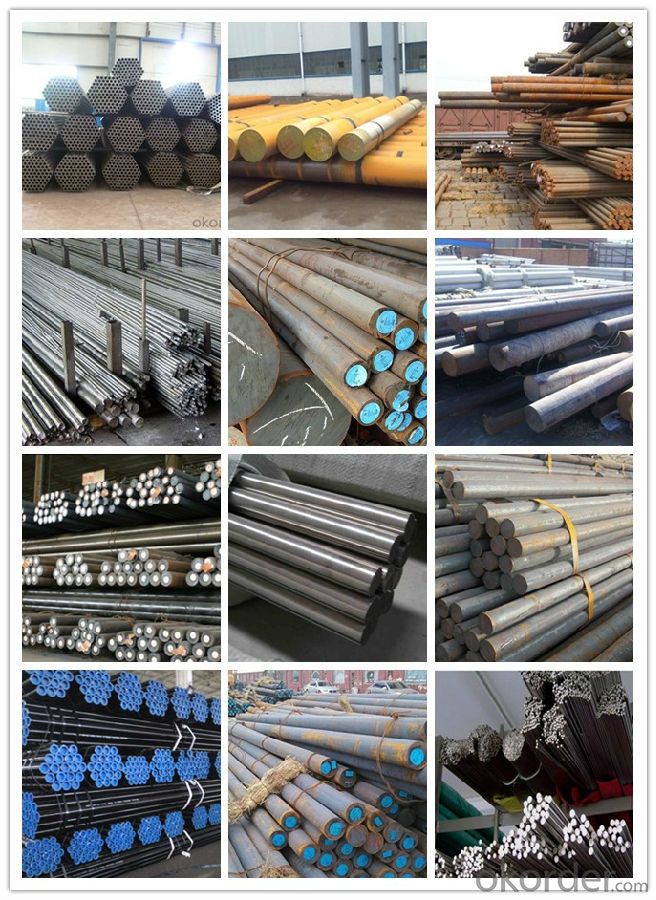
Workshop show
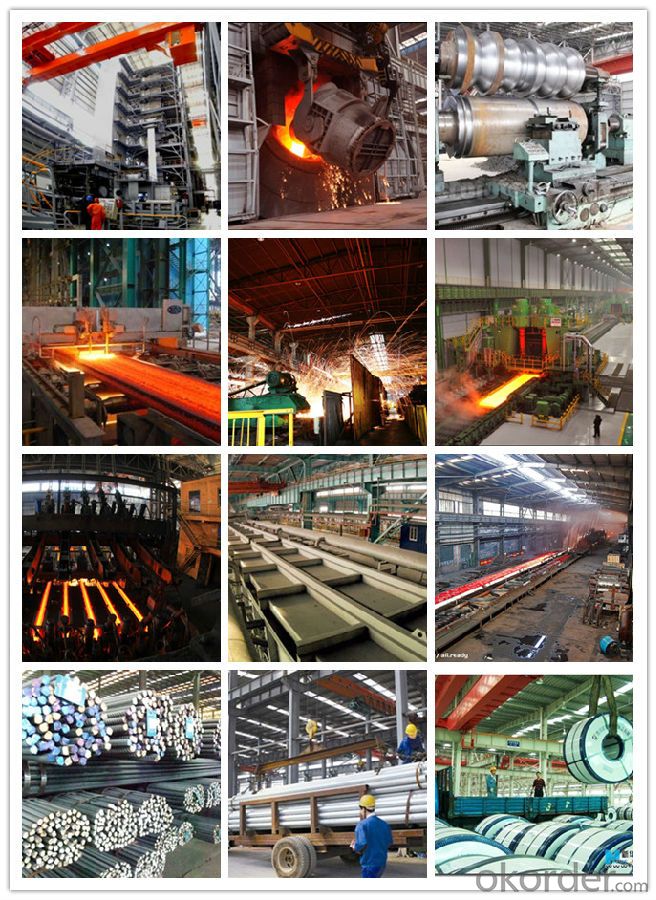
- Q: How does special steel contribute to the energy storage sector?
- The energy storage sector heavily relies on special steel, which plays an indispensable role by supplying critical components for various energy storage systems. One notable application of special steel lies in the production of batteries, which are crucial for storing energy in diverse forms. Special steel possesses exceptional qualities that make it an ideal choice for battery casings and frames. Its high strength, excellent corrosion resistance, and durability enable battery casings made from special steel to endure high pressures and shield internal components from external impacts. As a result, the entire energy storage system is ensured of safety and reliability. Moreover, special steel finds utility in the creation of electrodes, a vital part of batteries. Electrodes necessitate materials with efficient electrical conductivity and endurance for repeated charging and discharging cycles. Special steel, such as stainless steel, possesses excellent electrical conductivity and can withstand the demanding conditions within batteries, making it an excellent option for electrode production. Additionally, special steel is integrated into the construction of energy storage system infrastructure. Steel structures are utilized to support large-scale energy storage devices, including pumped hydro storage facilities and compressed air energy storage systems. These structures must possess strength, durability, and resistance to environmental conditions. Special steel provides the necessary properties to ensure the longevity and reliability of these energy storage infrastructure projects. In conclusion, special steel significantly contributes to the energy storage sector by supplying vital components for batteries, such as casings and electrodes. It also plays a crucial role in the construction of energy storage system infrastructure. With its exceptional qualities, special steel enhances the safety, efficiency, and durability of energy storage technologies, thereby facilitating the growth and advancement of the renewable energy sector as a whole.
- Q: How does special steel contribute to the automotive racing aftermarket industry?
- The automotive racing aftermarket industry relies heavily on special steel, which provides the necessary strength, durability, and performance for high-performance racing vehicles. In this industry, where speed, precision, and safety are of utmost importance, special steel offers exceptional properties that enable engineers and manufacturers to push performance limits. One significant contribution of special steel to the automotive racing aftermarket industry is its ability to endure extreme conditions. Racing vehicles face intense heat, pressure, and vibrations during high-speed races, which can place immense stress on various components. Special steel, with its outstanding heat resistance and high tensile strength, ensures that critical parts like engine components, transmission gears, and suspension systems can withstand these harsh conditions while maintaining optimal performance and safety. Furthermore, special steel's lightweight nature makes it an ideal material for racing vehicle components. Reducing weight is crucial in racing as it directly affects acceleration, handling, and overall performance. By utilizing special steel, manufacturers can create lighter yet stronger components, allowing racing teams to achieve higher speeds, improved maneuverability, and enhanced fuel efficiency. Special steel also contributes to the automotive racing aftermarket industry through its excellent machinability and weldability. This enables precise customization and modification of components according to the specific needs and preferences of racing teams. Whether it involves creating custom engine blocks, exhaust systems, or chassis reinforcements, special steel provides the necessary flexibility to optimize performance and gain a competitive edge. Moreover, the use of special steel in the automotive racing aftermarket industry promotes innovation and technological advancements. Steel manufacturers continuously develop new alloys and compositions that enhance the performance capabilities of racing vehicles. These advancements can include improved corrosion resistance, enhanced fatigue strength, and superior material properties, all of which contribute to the overall performance and longevity of racing vehicle components. In conclusion, special steel plays a vital role in the automotive racing aftermarket industry. Its unique combination of strength, durability, lightweight properties, and machinability allows racing teams to design and manufacture high-performance vehicles capable of withstanding extreme conditions. By leveraging the advantages of special steel, the industry can continue pushing the boundaries of automotive racing, delivering faster, safer, and more efficient racing machines.
- Q: What are the common challenges in heat treating titanium alloys?
- There are various difficulties encountered when heat treating titanium alloys. One of the primary obstacles arises from titanium's strong tendency to react with oxygen, nitrogen, and hydrogen at elevated temperatures. This reactivity can lead to contamination on the surface and the creation of unwanted oxides, nitrides, or hydrides, which can adversely affect the mechanical characteristics of the alloy. Another challenge involves the development of alpha-case, a thick layer of alpha-phase titanium that forms on the alloy's surface during the heating process. This alpha-case is brittle and can significantly diminish the material's fatigue strength and ductility. Consequently, it is crucial to minimize or eliminate the formation of alpha-case during titanium alloy heat treatment. Moreover, titanium alloys have a limited temperature range for effective heat treatment. If the temperature is too low, the desired microstructure and mechanical properties may not be achieved. Conversely, if the temperature is too high, grain growth can occur, resulting in reduced strength and toughness of the alloy. Furthermore, precise control over the heating and cooling rates is often required when heat treating titanium alloys to achieve the desired microstructure and properties. Inadequate or uneven cooling can lead to non-uniform microstructures, residual stresses, or distortion of the component. Finally, the cost of heat treating titanium alloys can pose a challenge. Titanium alloys have a high affinity for oxygen, necessitating the use of specialized equipment such as vacuum furnaces or controlled atmosphere furnaces to maintain a low oxygen environment. These specialized heat treatment processes can be costly and demand careful handling and maintenance to ensure the desired outcomes. To summarize, the common challenges encountered in heat treating titanium alloys include managing reactivity with oxygen, nitrogen, and hydrogen, minimizing alpha-case formation, achieving the appropriate temperature range, controlling heating and cooling rates, and dealing with the expenses associated with specialized equipment and processes. Overcoming these challenges is essential to obtain high-quality titanium alloy components with the desired properties.
- Q: How is special steel used in the manufacturing of machinery?
- Special steel is used in the manufacturing of machinery due to its unique properties and characteristics. It provides exceptional strength, durability, and resistance to wear and corrosion, making it suitable for critical components such as gears, shafts, bearings, and cutting tools. Special steel also allows for precise machining and shaping, enabling the production of complex machine parts. Overall, special steel enhances the performance and reliability of machinery, ensuring efficient and long-lasting operation.
- Q: What are the different methods for improving the fatigue strength of special steel?
- There are various ways to enhance the fatigue strength of special steel: 1. Heat treatment is a commonly used approach, involving processes like annealing, quenching, and tempering. These treatments refine the steel's microstructure, reduce impurities, and boost fatigue resistance. 2. Surface treatments, such as shot peening and nitriding, can also enhance fatigue strength. Shot peening bombards the steel surface with small metal particles, inducing compression stress that prevents crack formation and propagation. Nitriding diffuses nitrogen into the surface layer, creating a hard and wear-resistant nitride layer that improves fatigue resistance. 3. Alloying special steel with specific elements, like chromium, molybdenum, or vanadium, can significantly improve fatigue strength. These elements form carbides or nitrides, acting as barriers against crack propagation. 4. Applying protective surface coatings, like electroplating, hot-dip galvanizing, or physical vapor deposition (PVD), can enhance fatigue strength. These coatings act as barriers against environmental factors that may cause corrosion or surface damage, ultimately extending the steel's fatigue life. 5. Grain refinement can be achieved through processes like severe plastic deformation or equal channel angular pressing (ECAP). By refining the grain size, the steel's fatigue strength can be improved, as fine-grained steels have higher resistance to crack initiation and propagation. 6. Residual stress management plays a crucial role in enhancing fatigue strength. Techniques like stress relieving or shot peening can reduce tensile residual stresses, which are detrimental to fatigue resistance. It's important to consider specific requirements, the type of special steel, and the intended application when selecting the most suitable method for improving fatigue strength.
- Q: How is special steel recycled?
- Special steel is typically recycled through a process called electric arc furnace (EAF) steelmaking. In this process, scrap steel is collected and melted down in an electric arc furnace, where high temperatures are used to separate impurities. Once the impurities are removed, the molten steel is then refined and cast into new forms to create various specialized steel products, ensuring that the steel is effectively recycled and reused.
- Q: Can special steel be used for automotive engine components?
- Yes, special steel can be used for automotive engine components. Special steel, such as high-strength alloys or stainless steel, can offer superior mechanical properties, corrosion resistance, and heat resistance, making it suitable for demanding engine applications.
- Q: How does special steel contribute to the manufacturing of automotive engine components?
- Special steel plays a crucial role in the manufacturing of automotive engine components as it offers exceptional strength, durability, and heat resistance properties. It allows for the production of lighter and more fuel-efficient engines without compromising on performance. Special steel also ensures reliable and efficient functioning of engine parts, such as pistons, crankshafts, valves, and connecting rods, resulting in improved overall engine performance and longevity.
- Q: How is ultra-high-strength steel used in the construction industry?
- Ultra-high-strength steel is commonly used in the construction industry to enhance the structural integrity and resilience of buildings and infrastructure. Its exceptional strength-to-weight ratio allows for the creation of lighter and more durable structures. This steel variant is often employed in applications such as high-rise buildings, bridges, and offshore structures, where its superior strength properties provide increased safety and load-bearing capacity.
- Q: What are the requirements for special steel used in high-strength applications?
- To ensure the performance and durability of special steel used in high-strength applications, specific requirements must be met. These requirements encompass various factors: 1. High tensile strength is crucial in withstanding heavy loads and resisting deformation. It enables the steel to endure greater stresses without failure. 2. Excellent toughness is essential as it allows the steel to absorb energy and resist fracture. This prevents sudden and catastrophic failure under impact or dynamic loading conditions. 3. Superior hardness is necessary to resist wear, abrasion, and indentation. It ensures that the material maintains its structural integrity and performance even in extreme conditions. 4. Good ductility is important alongside high tensile strength. It allows the steel to undergo plastic deformation without fracturing, making it suitable for forming or shaping during manufacturing. 5. Resistance to corrosion is vital to prevent degradation caused by moisture, chemicals, or harsh environments. This ensures the longevity and reliability of the steel in various conditions. 6. Heat resistance is required for applications involving high temperatures. It allows the steel to maintain its mechanical properties and structural stability under elevated temperatures. 7. Controlled alloying elements, such as chromium, molybdenum, nickel, or vanadium, are often added to enhance the steel's strength, toughness, hardness, and other desired properties. 8. Precise composition and microstructure are necessary to ensure consistent and predictable mechanical properties. This can be achieved through precise manufacturing processes like controlled cooling rates or heat treatments. By meeting these requirements, special steel used in high-strength applications can endure the demanding conditions it faces, providing reliable performance, longevity, and safety.
Send your message to us
Special Steel GCr15 Cold Work Die Steel Steel Bar
- Loading Port:
- China main port
- Payment Terms:
- TT or LC
- Min Order Qty:
- 25 m.t.
- Supply Capability:
- 10000 m.t./month
OKorder Service Pledge
OKorder Financial Service
Similar products
Hot products
Hot Searches
Related keywords
